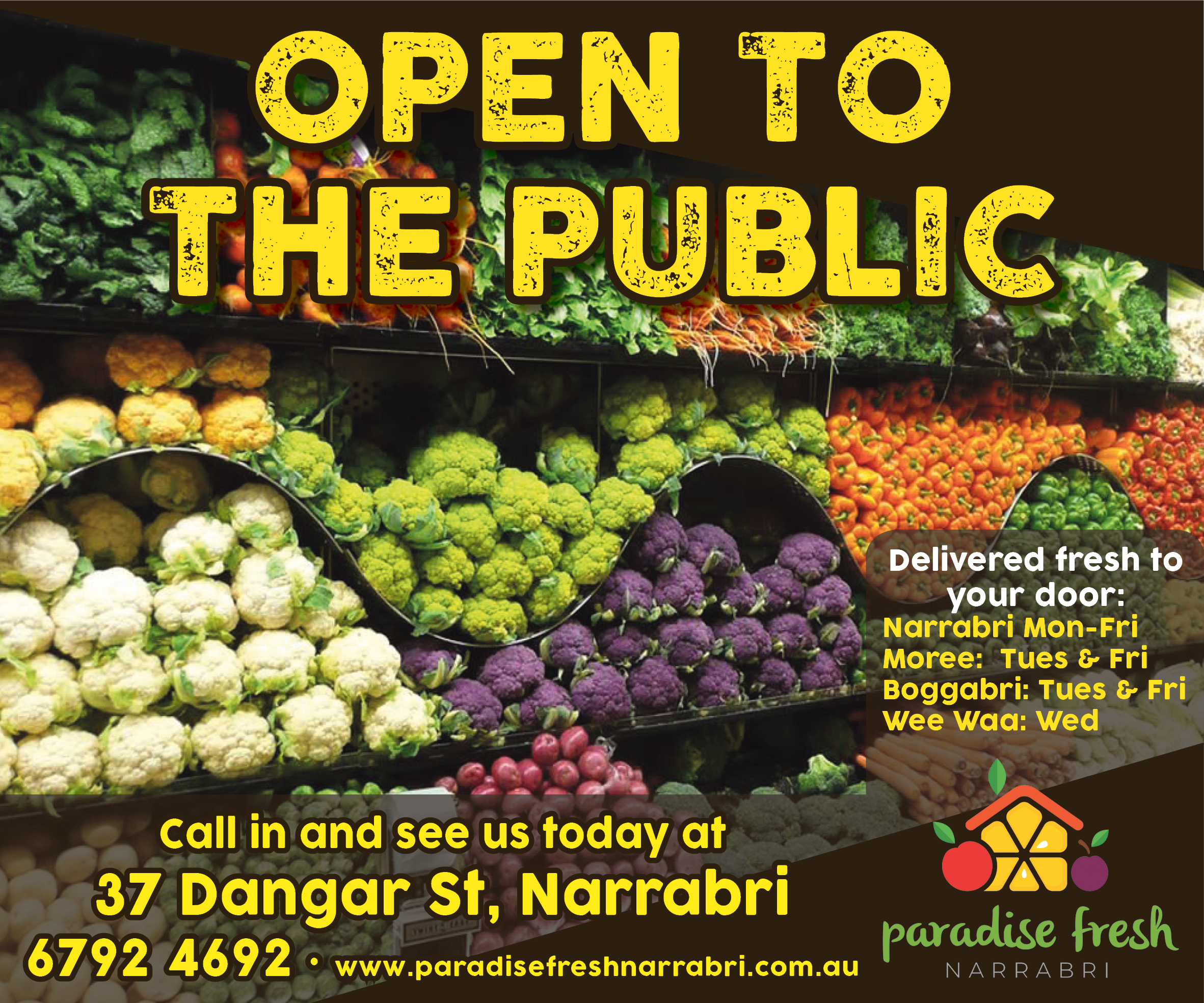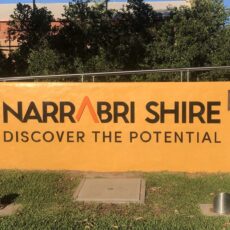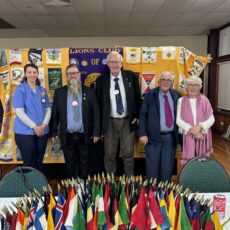Namoi Water executive officer Mick Coffey said an important date looms large on the calendar for local farmers and the communities they support.
Mr Coffey said a group of growers are contesting a current water allocation that he warns could see a drastic cut in water availability for irrigators and have dramatic flow on effects for the Namoi Valley’s towns, residents, and businesses.
On April 8 to 10, Mr Coffey said the NSW Water Minister and the NSW Department of Climate Change Energy Environment and Water (DCCEEW) are set to attend the NSW Land and Environment Court to defend the current Available Water Determination (AWD) issued for supplementary water access in the Namoi catchment.
He said the local irrigators, with supplementary licenses, will challenge ‘the legality of the process to make the current AWD’.
An AWD essentially outlines how much water a farmer is permitted to extract in a specific water year based on the volume licensed.
Mr Coffey, who is based in Narrabri, further explained the matter to The Courier.
“All surface water is subject to strict rules around access and allocations to irrigators,” he said.
“Historically, supplementary water has seen annual allocations of 100 per cent access available to licensed entitlements – it’s only there to access when the Namoi is running high, so it’s an opportune form of take in times of plenty in the river.
“If there’s no high flow then there’s no water pumped, pretty simple maths. There is 115,000 megalitres of supplementary water in the Namoi Valley and is an important part of the mix of water for growing food and fibre in the Namoi.
“To take a potential 74,000 megalitres of this out of productive use then the effect on the local economies in towns such as Narrabri, Wee Waa, Gunnedah, and Walgett will be devastating.
“Access to this type of water ensures people stay employed, that production continues on irrigation farms which in turn provides the essential cash flow to keep local businesses open and operating – tyre shops, cafes, machinery dealers, pubs, hairdressers, resellers – there isn’t anyone in our communities who in one way or another doesn’t rely on the irrigation industry, even if only a little bit for some, everyone is impacted when there’s decreased production.
“The next level of impact after that becomes when these businesses’ ability to sponsor local sporting clubs and other organisations is reduced.
“The socio-economic hit is huge.”
Surface water flows, their extractions and allocations are all forecast using highly technical software modelling which is formulated using data inputs based on historical actual data and also assumptions based on future forecasts regarding weather and climate, Mr Coffey explained.
He said the Namoi is currently being transitioned from an older hydrological model (known as the IQQM Model) to a new model, to be known as the eSource Model, which has been built by the government owned company, e-Water.
This new model also includes the incorporation of Floodplain Harvesting into its operation, however licenses for Floodplain Harvesting (FPH) have not been issued yet in the Namoi catchment, therefore the incorporation of a volume of water which is not yet legislated should not occur, according to Mr Coffey.
“This model has been adopted by the NSW Water Minister and her Department prematurely,” he said.
“It is not yet anywhere close to being fit for purpose, it includes a form of water take (FPH) which is not yet licensed nor included in the Water Sharing Plan and is creating perverse outcomes to irrigators and the communities they help to sustain.
“The reduction from 100 per cent to a paltry 36 per cent without independently being peer reviewed as a demonstration and/or justification is completely inappropriate.
“I don’t know of any business of any kind which would accept a cut of 64 per cent to their ability to operate and just take the word of the person making that decision that they could do so because they were right.
“If you are going to impact people, you better make sure you can prove it’s warranted, and until such time as you can do so, you don’t have the right to do so.
“There has been no proof provided, so a group of supplementary license holders made the choice to challenge the legality of the process to make the AWD, the use of the new model and concerns about a conflict of interest regarding the adoption of the new model to make the decision.”
Mr Coffey said the complexity of the issue at hand grows the longer the conversation is had about water modelling, different types of water licenses, allocations, the ability to access water. The legislation and policy under which the irrigation industry works can be ‘mind boggling’.
Whilst supplementary water is the issue at hand, it’s much larger and further reaching than just that, Mr Coffey explained further: “This new model isn’t for just the one form of water license (supplementary), it’s going to impact all forms of water licenses.
“By the model not being right, it changes the accuracy of all allocations and decisions regarding policy and legislation around general security, high security, unregulated water because if the numbers aren’t right in one place, there’s a domino effect on all other forms of water.
“Even groundwater can be impacted.
“The Namoi has an intricate and diverse investment in all forms of water licenses, our irrigators are efficient and progressive, they understand the importance of maximising their production for every drop of water and they want their farms still here growing food and fibre in generations and generations time, so sustainability is front and centre of their minds at all times.
“If governments and departments just get to march ahead making ludicrous unchallenged decisions our region and communities will die.
“The Namoi doesn’t roll over.
“We stand our ground and prove our side of the debate is correct by providing accurate, justified responses in a mature, respectful manner to make sure our irrigators, our communities are not disregarded.”
When asked about the role of Namoi Water in the upcoming proceedings and his thoughts on possible outcomes, Mr Coffey said:
“Namoi Water is not directly involved in the legal challenge, rather, it is a group of supplementary license holders who initiated the action back in August last year,” he said.
“However, since the Source Model first came to light in late 2022, Namoi Water immediately recognised it was riddled with errors due to the outputs it was generating.
“Since that time there has been significant time and resources put towards understanding the model, interrogating the inputs and assumptions which has resulted in a constant stream of feedback to the modelling team for correction.
“Currently, the model underestimates the irrigated crop production for the Namoi by 36 per cent – not anywhere near close enough in anyone’s book.
“Namoi Water has engaged professional engineering and hydrological consultants for the work which has been tabled back to the NSW Water Minister, the Department and the modellers to demonstrate and justify the corrections required.
“This information has been utilised by the lawyers and barristers engaged by the group of supplementary license holders.”
Mr Coffey said there’s an age-old saying, “whiskey is for drinking, water is for fighting”.
“It seems the irrigators in the Namoi are amidst yet another fight, and the scars of experience from previous bruising campaigns are holding them in good stead currently.”
The Courier contacted NSW Water Minister Rose Jackson’s office for comment and received the below response from a spokesperson for the NSW Department of Climate Change, Energy, the Environment and Water.
“Water sharing plans are developed by the department in consultation with the community to determine how much water can be extracted over the long-term and how much needs to be set aside for the environment.
“The volume of water licensed users can have, known as an allocation or available water determination (AWD), varies from year to year based on the licence category and size of their individual entitlement. This allocation is dependent on a range of factors including dam storage levels, river flows and catchment conditions.
“An Available Water Determination (AWD) is made at the start of each water year (July 1) to outline the percentage of each water user’s entitlement that different licence types can access in NSW.
“As this matter is before the courts, it would be inappropriate to comment further,” said the DCCEEW spokesperson.
To order photos from this page click here










